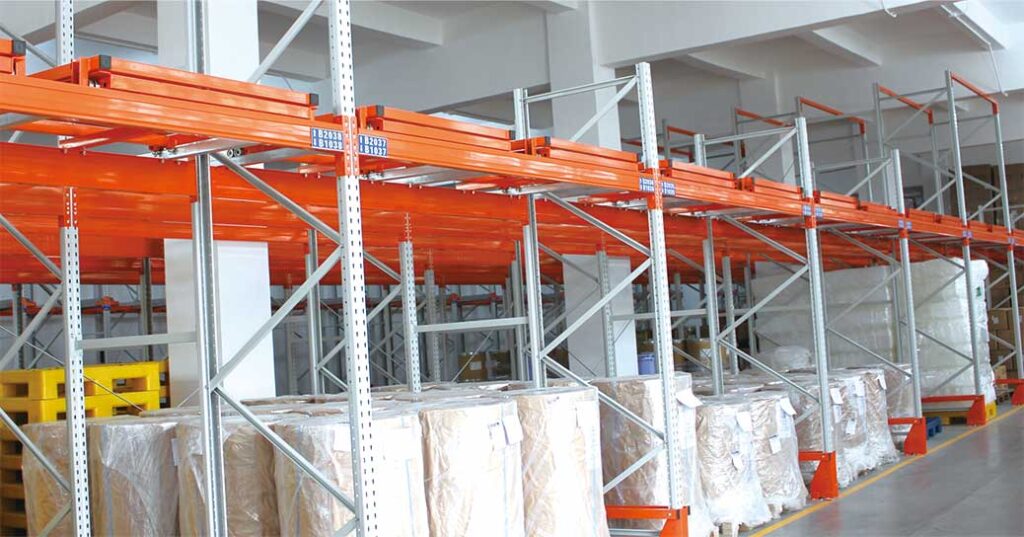Push Back Pallet Racking is a gravity flow racking system for the accumulation of pallets, designed for FILO load management (first pallet in, last pallet out).
Push-back pallet rack provides high-density storage where pallets are stored up to five deep. Using a forklift, pallets are pushed back on inclined rails mounted inside the racking. When a pallet is withdrawn, the one behind automatically slides forward to the front position of the pallet racking.

Push back rack is a live storage system that stores pallets on wheeled carts nesting on inclined storage rails. When a product is loaded into a push-back racking system, a pallet is placed onto a cart and pushes the pallet at the pick face back in one position.
Push-back racking for pallets has a single loading and unloading area, at the front of the structure, and the unit loads are stored by pushing the previous ones toward the back of the rack.
It can also be combined with other storage systems which makes it a versatile solution.
Push-back racking has enjoyed rapid growth in popularity recently due to offering similar space savings as a drive-in, with typically 3 to 5 times greater selectivity. This growth has been spurred by marketing trends such as rapid increases in the number of SKUs, mass customization, and more rapid product obsolescence.
Each level in a push-back system holds a series of nested rolling carts, operating in a lane that slopes upward away from the pick face.
Improved selectivity over Drive-In, which Push-Back often replaces.
Efficiency vs. Drive-In – trucks do not need to drive into rack loads that come to them at the pick face.
Less rack. Truck and product damage vs. Drive-In- with no trucks driving inside the rack.
There are a number of particular factors to satisfy before making a push-back purchase:
Interested in finding out more about Push Back Pallet Racking or Push Back Pallet Racking options for your warehouse? Request more information now.
